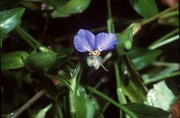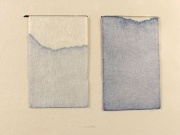Difference between revisions of "Dayflower blue"
Jump to navigation
Jump to search
(username removed) |
m (Text replace - "== Authority ==" to "== Sources Checked for Data in Record ==") |
||
| Line 26: | Line 26: | ||
| − | == | + | == Sources Checked for Data in Record == |
* R.Feller, M.Curran, C.Bailie, 'Identification of Traditional Organic Colorants Employed in Japanese Prints and Determination of their Rates of Fading', ''Japanese Woodblock Prints'', Allen Memorial Art Museum, Oberlin College, Oberlin, 1984 | * R.Feller, M.Curran, C.Bailie, 'Identification of Traditional Organic Colorants Employed in Japanese Prints and Determination of their Rates of Fading', ''Japanese Woodblock Prints'', Allen Memorial Art Museum, Oberlin College, Oberlin, 1984 | ||
Revision as of 19:25, 30 April 2016
Description
A blue dye extracted from the petals of the Commelina communis lily plant native to Asia. The blue colorant in the dayflower blue dye is primarily commelinin.
Synonyms and Related Terms
tsuyukusa (Jap.); aigami (Jap.); commelinin; Commelina communis (Asiatic dayflower)
Other Properties
ISO R105 Lightfastness Classification =
Additional Information
° S.Shimoyama, Y.Noda, S.Katshuhara, "Non-Destructive Analysis of Ukiyo-E Prints" Dyes in History and Archaeology, No.15, Paper presented in Manchester England, Nov. 1996.
Additional Images
Sources Checked for Data in Record
- R.Feller, M.Curran, C.Bailie, 'Identification of Traditional Organic Colorants Employed in Japanese Prints and Determination of their Rates of Fading', Japanese Woodblock Prints, Allen Memorial Art Museum, Oberlin College, Oberlin, 1984


